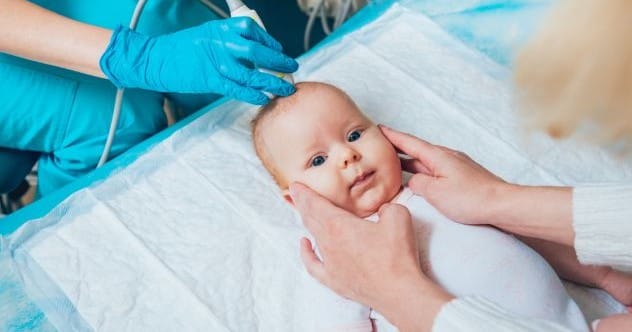Scientists and psychologists often carry out experiments to advance human knowledge and improve our lives. However, some of these experiments, especially when conducted on children, are seen as controversial and raise serious ethical questions. Let’s explore ten such controversial experiments conducted on children.
Practice-Babies Program
Between 1926 and 1947, several colleges ran a “practice babies” program, borrowing babies from local orphanages. Home economics students practiced parenting skills on these newborns, with groups of about eight students responsible for each baby’s needs.
Each baby was given a name followed by the surname Domecon (domestic economy) to keep their identity anonymous. After a couple of years, the babies would be adopted. Although the orphans received excellent care, some argue that the lack of a consistent bond negatively affected them. Some participants reported difficulties in forming close relationships later in life, feeling used despite the good care they received. [1]
Racism Among Elementary Students
In 1968, after Martin Luther King Jr.’s assassination, teacher Jane Elliott conducted a controversial experiment to teach her students about racism. She divided her all-white classroom based on eye color, declaring blue-eyed students superior.
Blue-eyed students received privileges, while brown-eyed students faced discrimination. The blue-eyed students became more confident, while the brown-eyed students felt insecure. Elliott later reversed the roles. The experiment faced backlash but was considered life-changing by many students, highlighting the impact of prejudice. [2]
Monster Study
In 1939, Dr. Wendell Johnson studied stuttering on 22 orphans. He divided them into “normal speakers” and “stutterers,” regardless of their actual speech. Children in the “stutterers” group were discouraged from speaking unless they could do so correctly.
While praised children didn’t improve, some in the “stutterers” group developed speech problems. Five of six falsely scolded children developed speech issues, leading to psychological trauma and academic struggles. One child even ran away. Known as “The Monster Study,” it is considered unethical due to the harm inflicted on vulnerable children. [3]
Dr. Money Gender Experiment
David Reimer, born in 1965, lost his penis during a circumcision accident. Psychologist Dr. John Money, believing gender identity was based on upbringing, advised Reimer’s parents to raise him as a girl.
Reimer underwent surgery to create female genitalia and was raised as Brenda. Despite this, he felt like a boy, leading to severe emotional issues. Eventually, he learned the truth and transitioned back to male. The psychological trauma led to his suicide at age 38, highlighting the complexities of gender identity. [4]
Hepatitis in Mentally Disabled Children
In the 1950s, an outbreak of hepatitis occurred at the Willowbrook State School for mentally disabled children. Dr. Saul Krugman proposed research to distinguish hepatitis strains, involving intentionally infecting children with local strains.
Krugman argued the children would be exposed naturally and face only minor harm. Consent was obtained, but critics argued it was coercive, as admission to the school was promised in return. This experiment raises serious ethical concerns about exploiting vulnerable individuals. [5]
Electroshock Therapy
Dr. Lauretta Bender, a psychiatrist, controversially used electroshock therapy on children in the 1960s. At Creedmoor Psychiatric Center, she treated children with social and behavioral issues, believing she could identify early schizophrenia signs.
Bender administered electroshock therapy to over 100 children, causing emotional and physical trauma. Despite some considering her a pioneer, her methods were widely criticized and eventually shut down. Today, her work highlights the need for ethical standards in psychiatric research. [6]
Little Albert
John B. Watson and Rosalie Rayner conducted the Little Albert Experiment, where a young boy, “Little Albert,” was conditioned to fear certain stimuli. Initially, Albert showed no fear of objects like a white rat.
Watson paired the rat with a loud noise, causing Albert to cry. Over time, Albert began to fear the rat and other white, fluffy objects. This experiment demonstrated how classical conditioning can create emotional responses, but it is criticized for its ethical implications on a vulnerable child. [7]
Bobo Doll Experiment
In 1961, Albert Bandura investigated whether social behaviors could be learned through imitation. Children were divided into groups and shown videos of adults interacting with a Bobo Doll.
One group saw adults attacking the doll, another saw non-violent interaction, and a control group saw no video. Children who watched the aggressive video were more likely to attack the doll. Critics argue the doll was designed to be hit, questioning the experiment’s validity. [8]
Visual Cliff Experiment
Psychologists studied depth perception in infants using a visual cliff—a glass surface with a patterned fabric underneath to create the illusion of a drop-off.
Infants were encouraged to crawl across the glass, but most avoided the “cliff,” demonstrating an understanding of depth. Researchers noted that some babies crawled close enough to the edge to have fallen off a real cliff, showcasing a cautious awareness. [9]
Robbers Cave Experiment
Muzafer Sherif studied intergroup conflict with 22 boys at Robbers Cave State Park. The boys were divided into two groups and kept separate initially, encouraging bonding within each group.
When the groups were introduced, they competed in tournaments, leading to hostility. Initially, the groups yelled at each other, but the conflict escalated to physical fights. After one group won, the other ransacked their cabin, illustrating how easily intergroup conflict can arise. [10]
These ten experiments, while aiming to advance science, raise profound ethical questions about the treatment of children in research. They highlight the importance of protecting vulnerable individuals and adhering to strict ethical guidelines.
What are your thoughts on these experiments? Share your opinions in the comments below!










